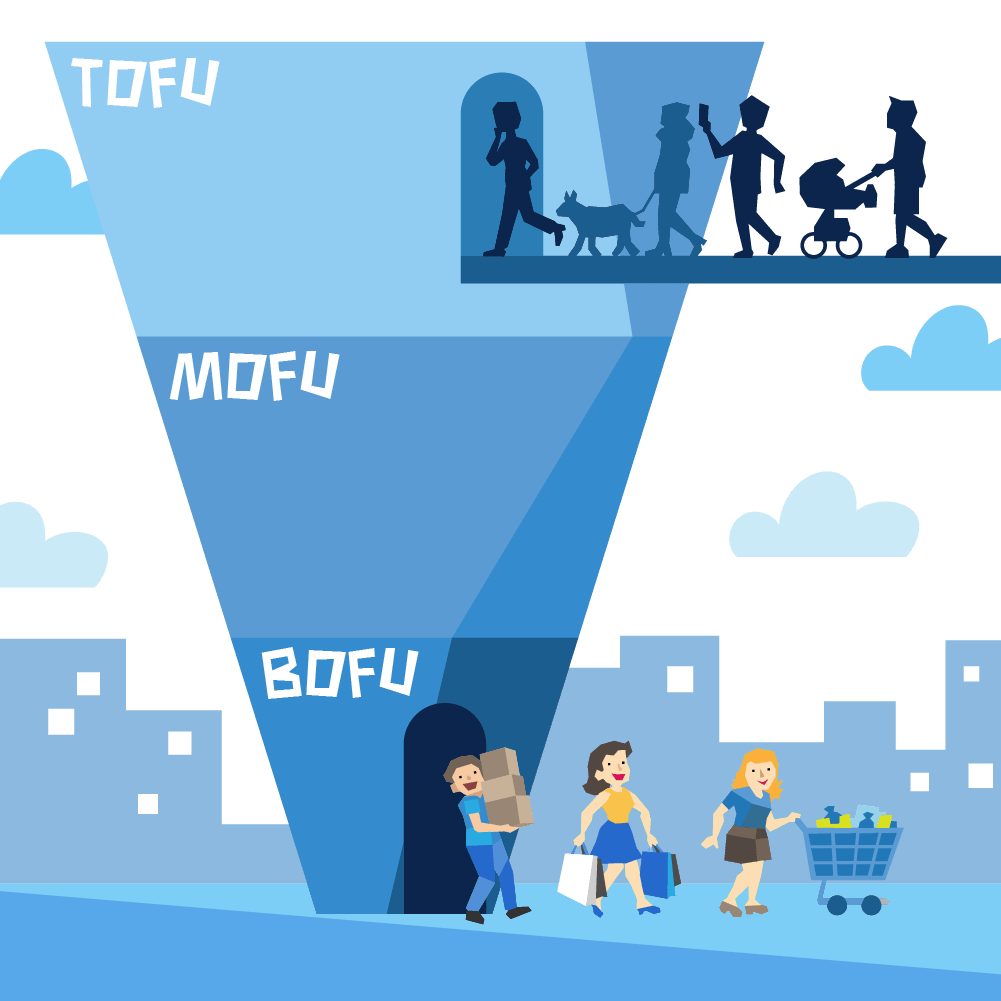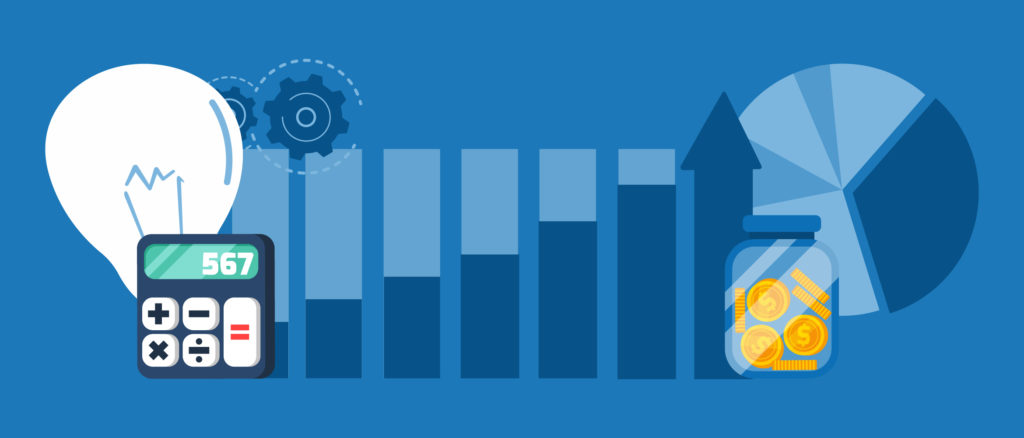Marketing Funnels: How It Can Improve Your Sales Strategy

Inbound marketing is one of the most critical ways that SMEs – and larger enterprises – can operate a successful system for marketing, sales and customer engagement workflows via online web assets.
This marketing strategy can help companies grow, scale, and expand their market share, while bettering their bottom and top lines.
As an efficient and effective system for reaching and keeping customers, inbound marketing allows executives to reach leads and prospects where they are (on the Internet), while offering critical information that is valuable to prospects.
Such valuable information, in the form of blog articles, social media posts, and website pages, helps to lead interested parties to a company’s products and services by giving something valuable for free – critical information that can lead prospects to the company’s products/services.
In order to fully understand the most effective way of carrying out inbound marketing workflows, the all-important marketing funnel system must be analyzed, understood, and implemented as a part of a company’s marketing and sales process. The marketing funnel system is key to utilizing today’s marketing best practices in order to attract prospects, create qualified leads, and convert them not only into customers, but into loyal advocates of the company brand.
The marketing funnel system associated with marketing and sales processes has changed over time, yet still encompasses several layers:
- Top of the Funnel (ToFU): In the ToFu stage, prospects and unqualified leads are interested in solving a particular problem, and require information to interest them in considering different products and services (including your company’s products). In the ToFu stage, the goal is to utilize critical buyer personas to understand who – and what – leads (and types of leads) are, what they are looking for, and how free Information (e.g. informative ebooks or blog posts) can help educate them, while getting them interested in your products that may solve their problems. Essentially, ToFu workflows revolve around Lead Generation.
- Middle of the Funnel (MoFu): In the MoFu stage prospects are nurtured into qualified leads, that is, given less information on solving their problems and more information suggesting and convincing them that your company’s products/services are best to meet their current need. In this stage, the goal is to understand the lead’s needs and meet him/her there by providing them with the perfect solution to their problem. MoFu workflows revolve around Lead Nurturing and converting prospects into qualified leads that are ready to be nurtured into customers in the sales cycle.
- Bottom of the Funnel (BoFu): The BoFu phase of the marketing funnel is associated with the sales cycle, and includes working with fully converted leads that become customers. The goal of this phase is to ensure that leads obtain the solution that they needed in the initial phase of the funnel, while reducing churn rates. The BoFu process is fully associated with the sales process.
Additionally, the marketing funnel system can be visualized as a large funnel (via the top-down approach of a narrow bottom and a broad top) encompassing many stages (which can vary):
- Awareness: The awareness stage is associated with the prospect first coming across your company’s web asset, and its associated products and services. This is the discovery stage.
- Interest: At this stage, the prospect is able to understand more about your company’s inbound marketing blog articles, and other such materials that are meant to educate interested parties about possible solutions.
- Consideration/Evaluation: The prospect is now a lead that is evaluating your company’s specific products/services, while perhaps conducting comparisons with competition.
- Intent/Conversion (Sale): At this stage, the qualified lead is converted into a customer, and buys the associated products/services from your company.
- Loyalty/Advocacy: In the loyalty stage, the customer is a returnee who often times recommends your company to other prospects.
The Awareness stage is typically aligned with the top of the marketing funnel, while the Interest and Consideration stages typically encompass the middle of the marketing funnel. Finally, the Conversion and Loyalty stages are aligned with the sales process, or the bottom of the marketing funnel phase.
Modern marketing funnels often include an expanded set of stages after the sale which includes an expanding bottom of the funnel encompassing the post-sale process of creating customer loyalty and having customers operate as brand advocates for the company.
Marketers can create a marketing funnel by designing a visual diagram composed of tailored stages, sub stages, and overarching phases associated with their web asset’s marketing and sales processes.
What Is A Marketing Funnel?
The marketing funnel system is simply a visual methodology of automating, tracking, and systematically optimizing marketing and sales workflows in a business, in a way that leads to more qualified leads, greater sales, reduced churn rates, and improved conversion rates overall. Put another way, the marketing funnel is a visualized methodology for strategizing every step of the customer buying process, from the time that a potential customer hears about your business from a blog/video/email, to the point where they use your website to become a frequent buyer of your products/services.
Companies should remember that every step of the marketing funnel can be combined with analytics, automation and strategic planning – that is, each step should be tracked, analyzed, and automated (where possible), so that critical insights can be gleaned to allow marketing executives to alter their strategy to draw in more prospects, create more qualified leads, and convert more leads into loyal customers and brand advocates.
Objectives Of A Marketing Funnel
marketing funnel system has a specific objective that must be aligned with marketing/sales goals and each subsequent customer interaction, which can help marketing executives to tailor each phase, stage, and workflow to its specific demographics for a more optimal marketing process in the future.
Define Stages To Impart The Right Actions At The Right Time
As noted above, in order to fully implement an effective and optimal marketing and sales funnel system correctly, it is best to strategically plan – and align – each stage with critical actions that customers typically take at specific times. What this means is that, since customers are known (based on previous interactions) to interact with the web asset in a specific time and in a specific way (e.g. clicking on blog articles in the awareness stage, clicking on product descriptions in the interest/evaluation stages, etc.), not only can the web asset be developed with a clear strategic plan in mind, but each stage and substage can be created in a marketing strategic plan that tracks customer interactions at each stage/sub-stage.
Track And Measure Funnel Stage Data
We’ve discussed that measuring and tracking data from each marketing funnel stage is critical for marketing executives to ascertain which strategies are working, where bottlenecks may occur, what stages need refining, how well conversion strategies are working, and what may be creating greater or reduced churn rates. This effective system for monitoring and optimizing your company’s marketing and sales process can be created, in conjunction with data analytics and automation, and will allow your business marketing system to be fully optimize based on business intelligence insights.
There are a number of data sets that should be tracked and measured:
- How long leads remain within a certain stage: Determining lead time frames can help to maximize resources for different key stages, while giving companies a better understanding of how to strategically build the marketing pipeline per stage and to create a realistic timeframe for each stage. When leads do not meet the planned timeline, marketers can ask why and try to find out the answer, potentially optimizing the pipeline. This dataset can also help to identify the most critical stages.
- How many leads are in a given stage at any time: This can help to efficiently spread resources in the most effective manner and ensure that all leads receive enough nurturing and/or assistance for optimal conversion rates.
- The conversion rates of leads moving from one stage to the next: This critical dataset can determine where marketing strategies fail, why, and how the stage processes can be optimized as necessary.
- Churn rates between different stages: Along with above, stage churn rates can help marketers identity where their marketing strategic are failing, and what stage strategies need to be optimized, altered, refined, or completely redone.
Efficiently prospecting and building a pipeline is critical. AutoGrow.co and a Salesforce survey found that 68 percent of companies do not measure their funnel data, and 79 recent of their marketing leads to not convert to sales (“Marketing Automation & Your CRM #infographic”). Without measuring and tracking marketing funnel data, it would be nigh impossible for companies to identify why their leads are not converting. It is also important for companies of all sizes to compare their numbers with industry standards so they know how well competition is faring.
Forecasting Future Leads and Opportunities
Utilizing datasets also allows marketers to forecast and predict future customer behavior in order to better allocate resources, and to have a better understanding of how to convert future leads and take advantage of marketing opportunities. Essentially, creating, implementing and tracking an effective marketing funnel system allows marketers to know what is working, what isn’t working, and how well marketing strategies will work in the future.
Provide The Right Solution To Your Potential Prospects
The above datasets are not arbitrary, independent pieces of information – on the contrary, they represent the actions of prospects/customers, and produce actionable insights that can be used in the future. Analyzing and understanding past customer behavior means understanding the needs of future leads that can help to improve conversion rates by providing the most tailored solutions to problems that have been solved in the past.
How Marketing Funnels Help Your Sales Strategy
Essentially, marketing funnels allow a marketer to have an in-depth look into what is working and what isn’t working, and to fix what isn’t working and optimize what is working to make it even better.
Top Level Overview Available at All Times
A visualized, well-built marketing funnel provides marketers with a top-level overview of marketing/sales workflows, efficiency numbers, datasets associated with customer interactions, and an overview of how well the entire system is operating. The marketing funnel – in conjunction with an effective CRM – can operate as a central hub that gives marketers an at-a-glance overview of the entire marketing/sales process, all in real time.
Visual Representation of Drop Off and Expected Numbers
While churn rates and customer drop off are unavoidable, it helps marketers to know at which stage such drop off occurs, giving them a potential answer as to why it occurs, so the issue can be effectively fixed. Having a visual system in place allows for the effective and feasible procuring of actionable insights and key ideas that can allow a marketer to make optimizations and changes to the marketing/sales system in real time.
Easy Diagnoses of What Steps Make Poor Leads
As noted above, the marketing funnel excels in revealing what parts of the funnel aren’t working, and how steps leading to poor lead generation or conversion can be optimized or refined. Such an at-a-glance and easy-to-diagnose system can help to save time, resources, and poor lead generation/conversion rates in a quick and efficient manner due to such a visualization system revealing a robust overview of marketing/sales processes in real time.
Easier Sales Resource Allocation
We’ve seen how data analytics and marketing efficacy can be tracked feasibly with an effective marketing and sales funnel system. This includes more effective forecasts and better lead estimates/predictions, allowing for improved resource allocation in both marketing and sales processes., including:
- Marketing: ToFu and MoFu processes, comprising awareness, interest, and evaluation stages, require resources for web assets and a variety of online web applications can be tailored according to the visualized marketing system. If, for instance, leads require more information on a product service (i.e. spend more time in the interest or evaluation stage), including more videos or interactive tutorials, then resources can be allocated towards more hosting services, and can be taken away from other, less critical marketing workflows within the web system.
- Sales: BoFu processes, including conversion and loyalty stages, require resources for sales gateways, and customer service chat systems, which can also be tailored according to the visualized marketing system. For example, if the system shows that customers require more time with customer service reps to complete purchases, and less time with placing an online order, then resources can be allocated towards online chat systems.
Leads That Pass Through a Funnel Require Less Information
When setting up an automated marketing funnel system with automated tracking, analytics, pattern analysis and (perhaps) CRM systems, all information associated with leads, prospects and customers can be visualized easily and understood without additional information, manual tasks, or processes.
Spend More Time Solving Problems
A well-designed marketing funnel, based on a well known system of typical stages/phases, means marketers won’t require additional information, or workflows, for marketing process analysis, as long as it adheres to a known marketing funnel blueprint. This gives marketers more time for problem-solving tasks.
The Marketing Funnel is Where Sales Meets Marketing
While the marketing funnel focuses on marketing in a major way, it connects marketing tasks (and teams) with sales tasks/teams, allowing an integrated approach that can visualize the overall marketing/sales system, while allowing for a connected set of tasks (between marketing and sales) that can be tracked, optimized, analyzed, and strategized, optimizing both marketing and sales processes.
More Formal Agreement of Where Responsibility Swaps
The marketing and sales funnel also allows teams in marketing and sales to fully know their responsibilities and how their responsibilities connect with the workflows of others within the overarching marketing funnel system. Since the new “modern” funnel results in a feedback loop, where loyal customers (at the “bottom sales stage”) help new prospects go into the “top stage” – the awareness stage – connecting marketing teams and sales teams within a single system can result in better allocated resources and more efficient workflows, with teams on either side knowing exactly where responsibility for a lead/customer swaps.
Improve Your Sales Strategy by Implementing a Marketing Funnel
Ultimately, an effective marketing funnel system is critical for a business to succeed in the online sphere of inbound marketing. However, if a business is to succeed with such a system, it is critical that the marketing funnel be tracked, monitored, and analyzed to gain insights that can allow marketers to alter, refine and optimize marketing stage/phase strategies and processes into the most effective marketing/sales engine possible. In turn, this can result in more leads, better conversion rates, lower churn rates, and more loyal customers.
Having a marketing funnel also helps to improve the overarching sales process and sales strategy by revealing exactly how prospects go along each stage of the marketing and sales funnel, resulting in a conversion – and a sale. Ultimately, this can reveal which strategies in both the marketing and sales processes are working, and which ones need optimizing and refining.








